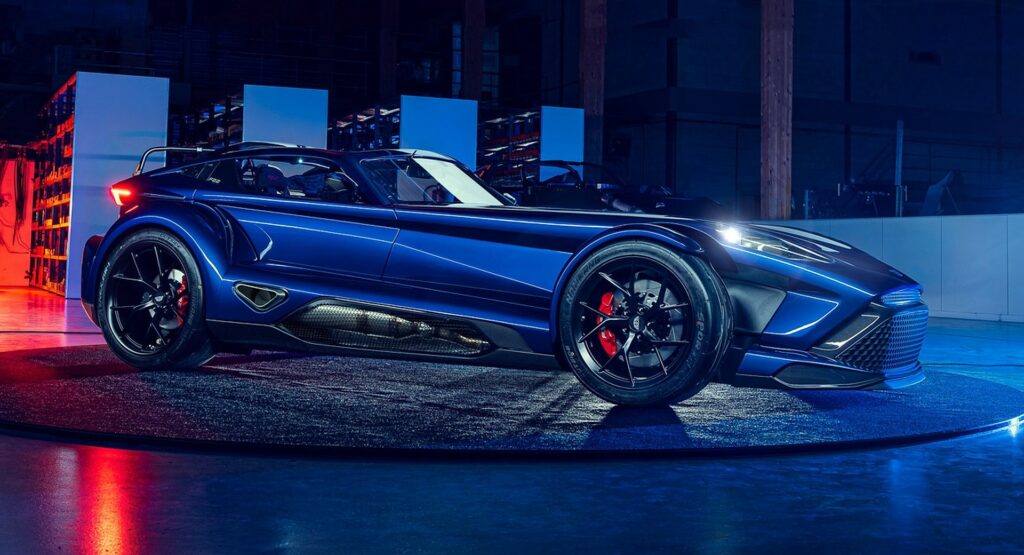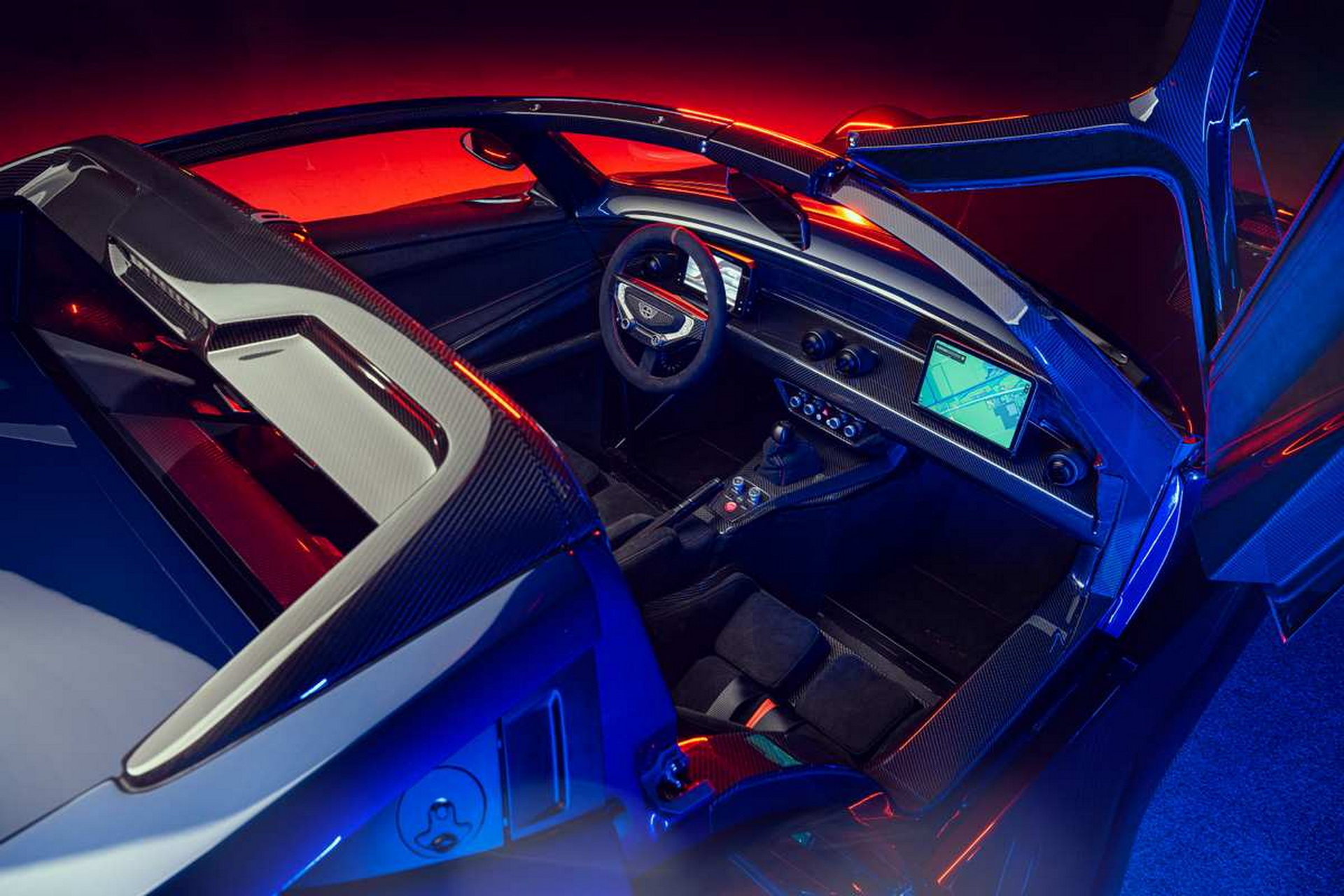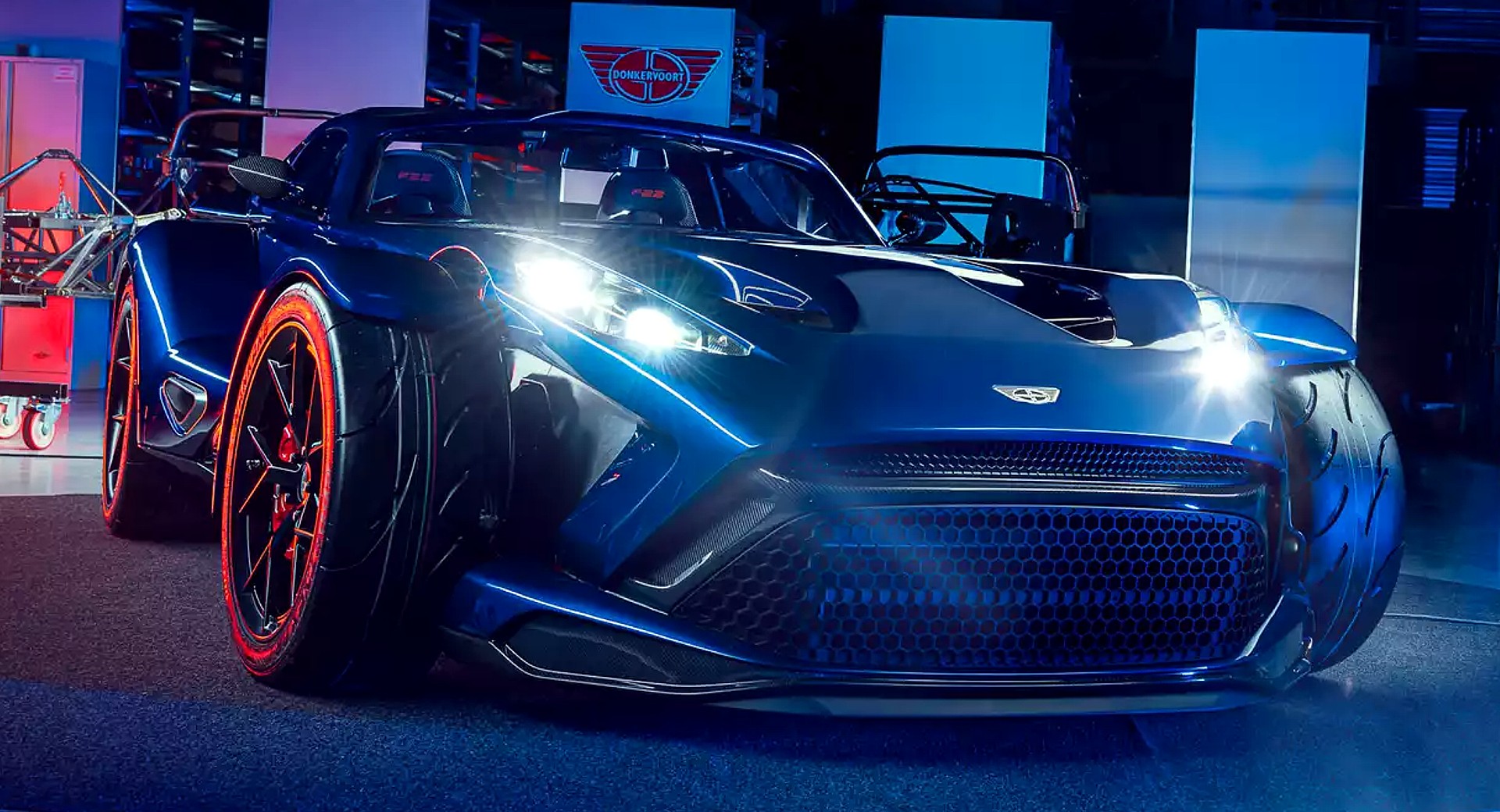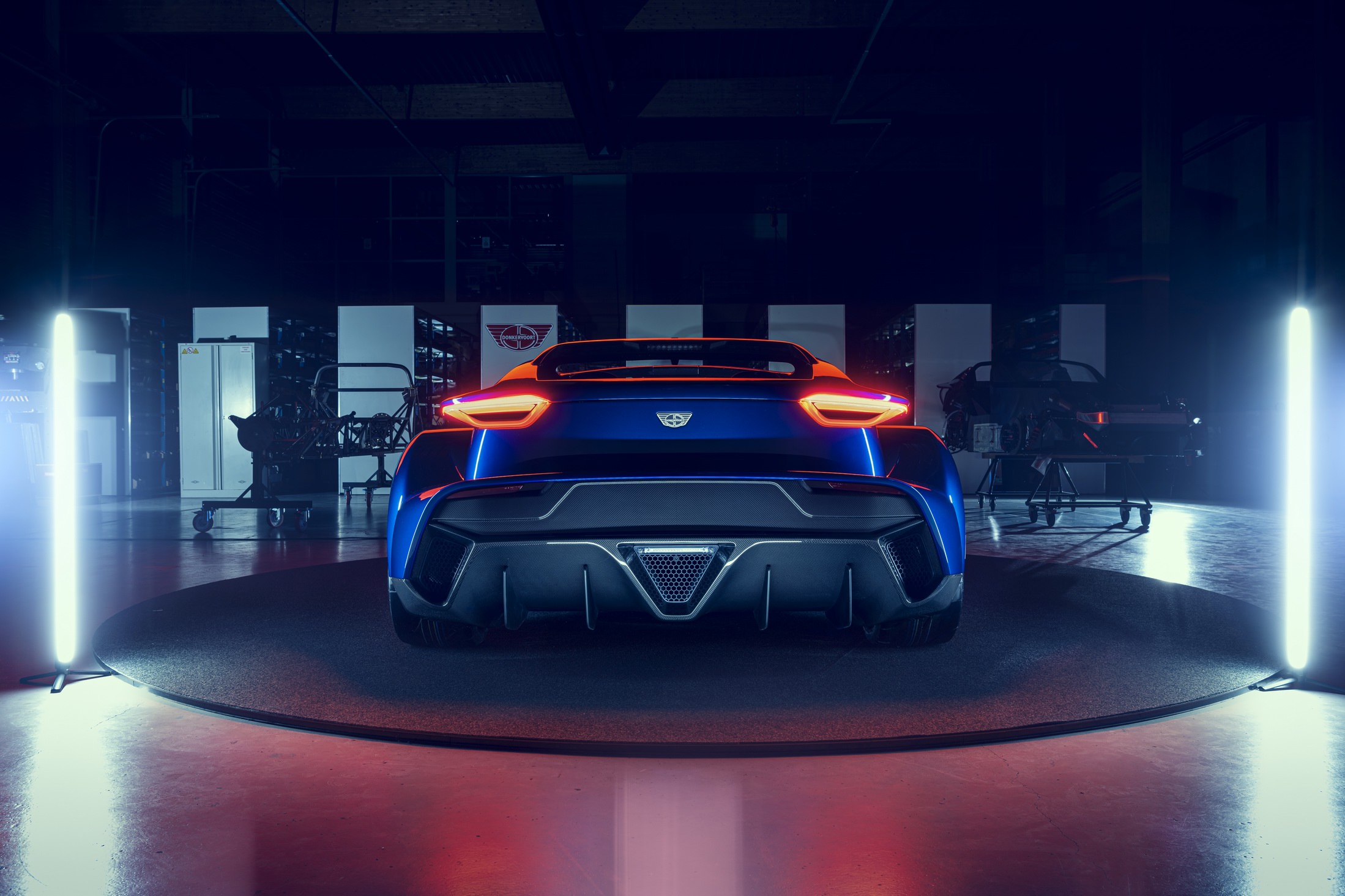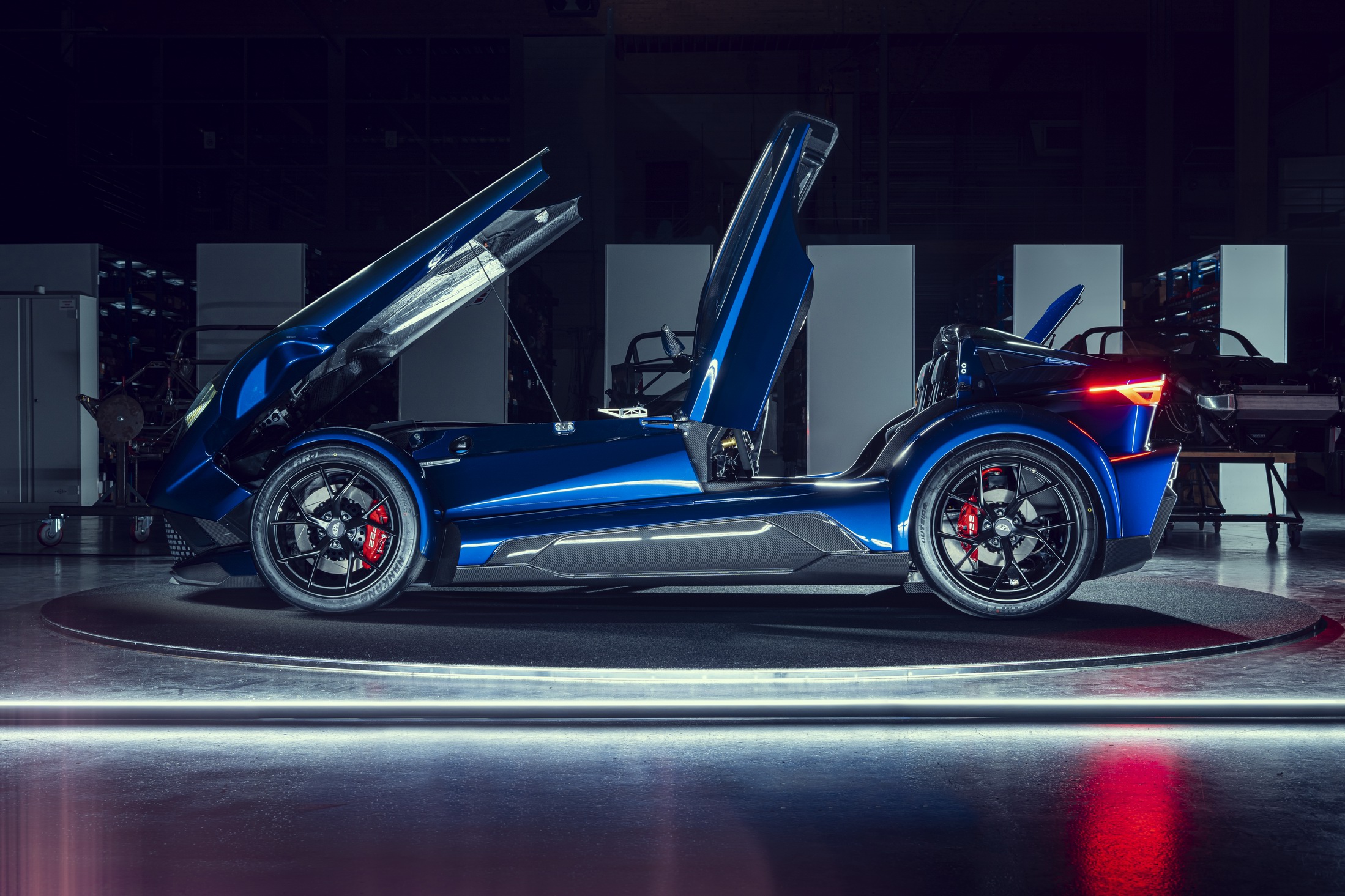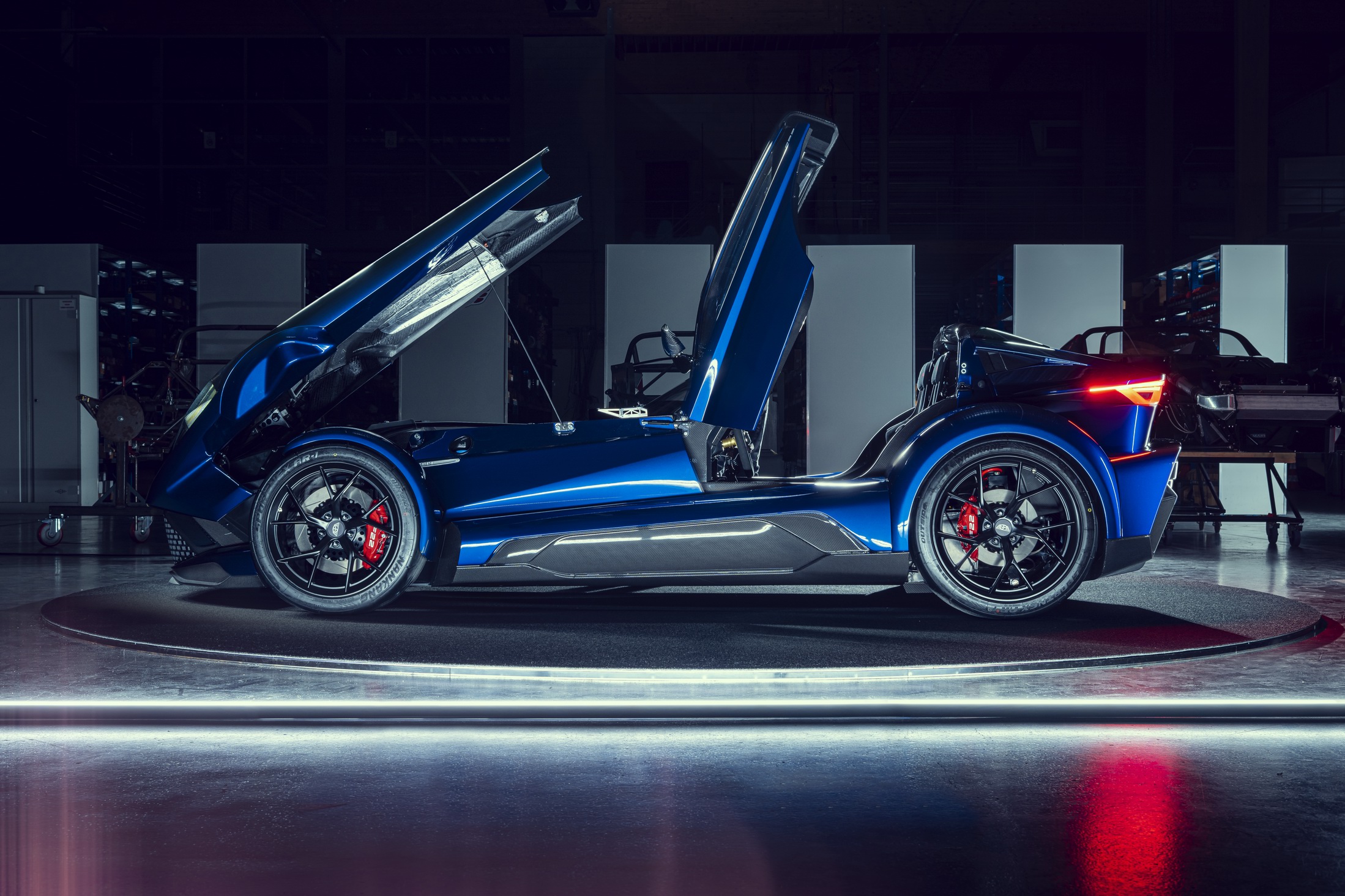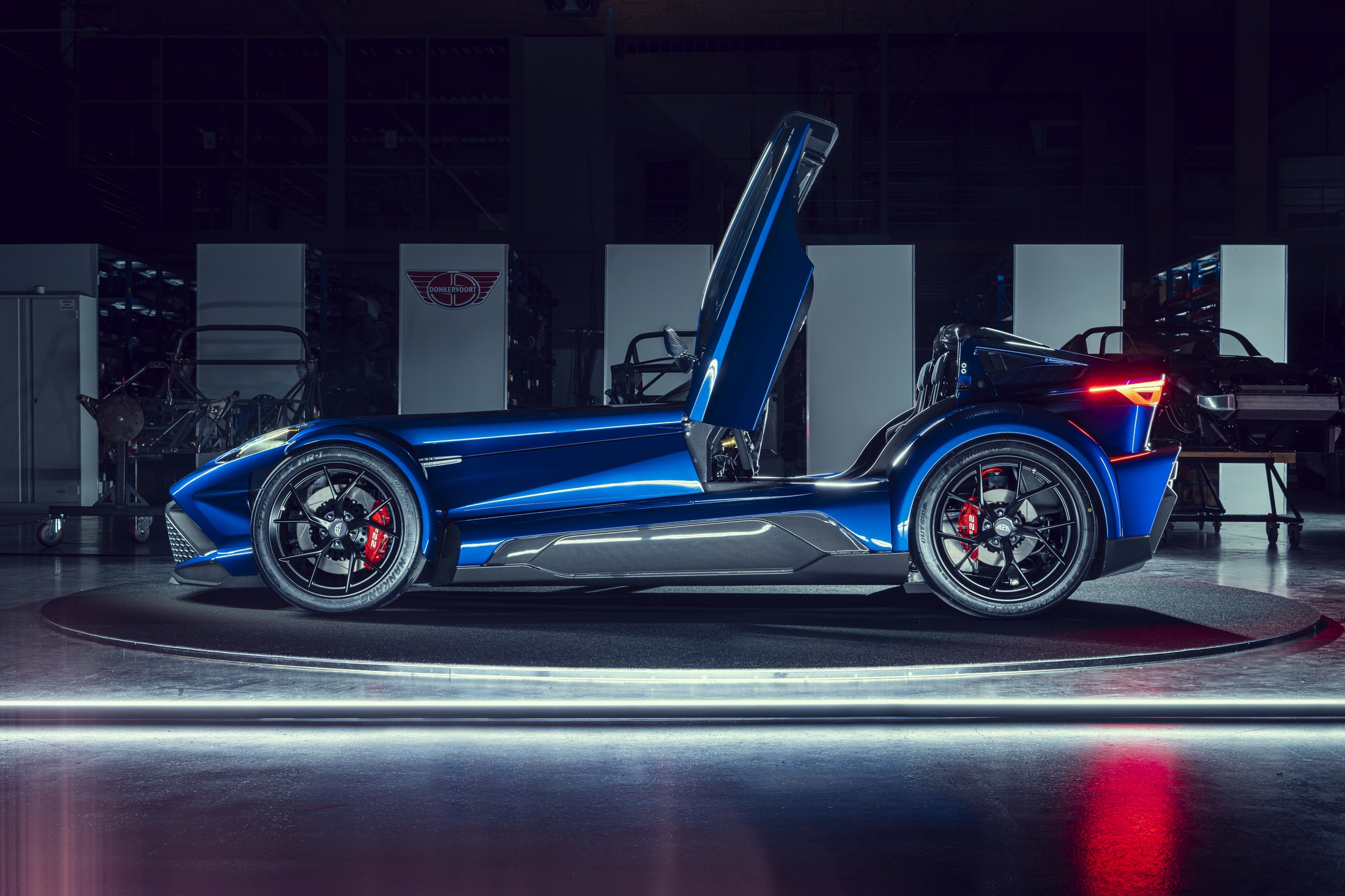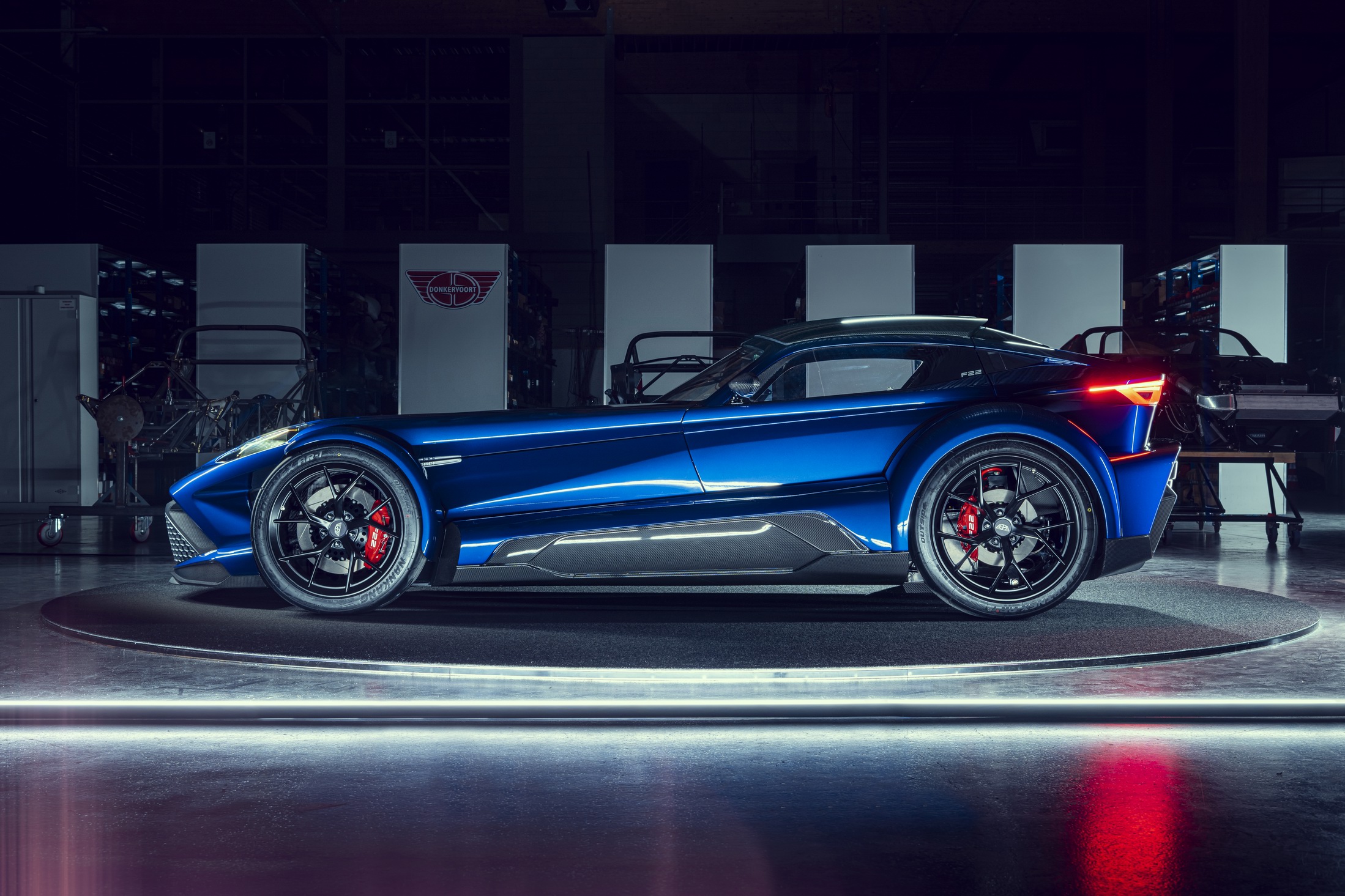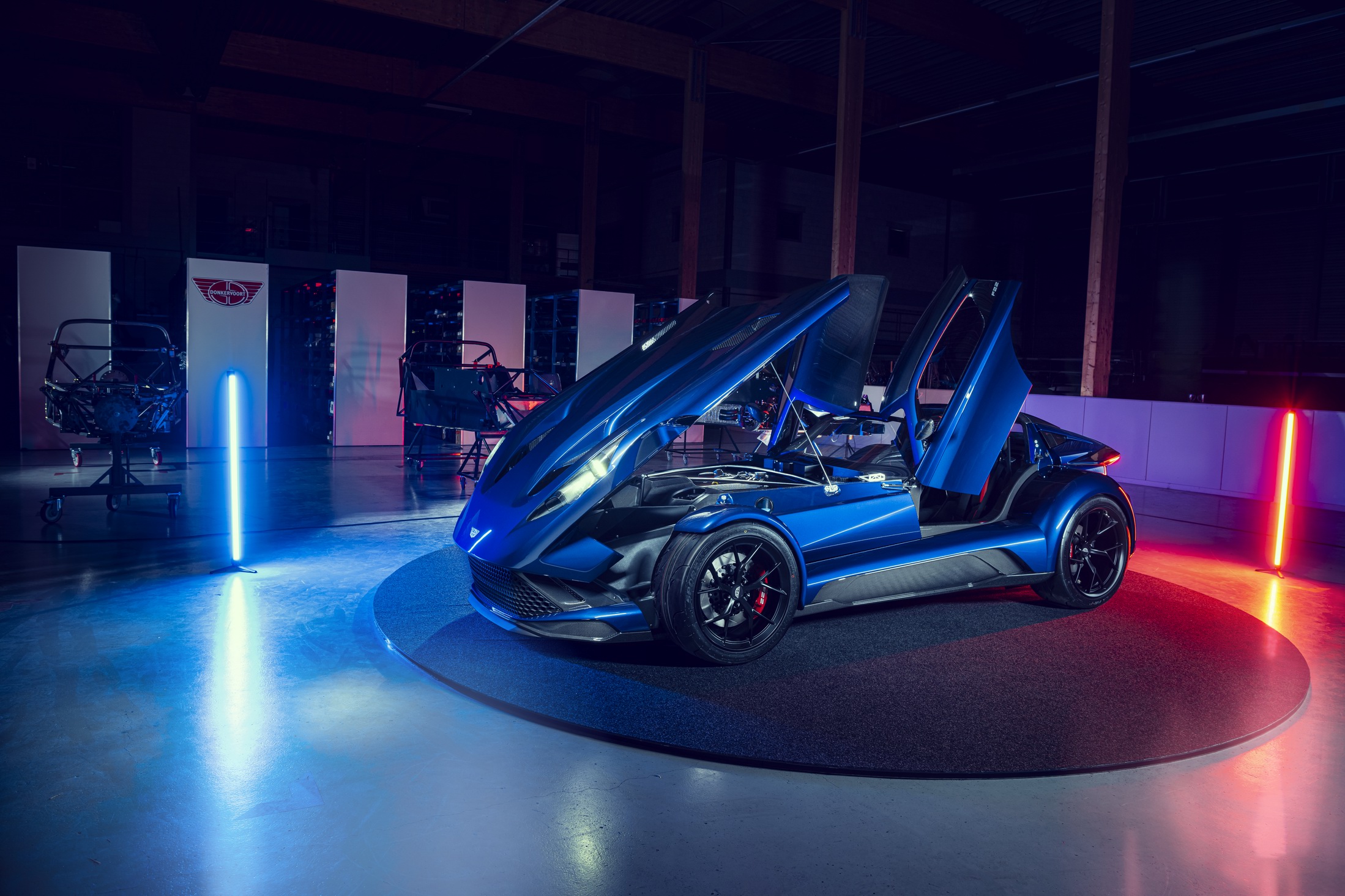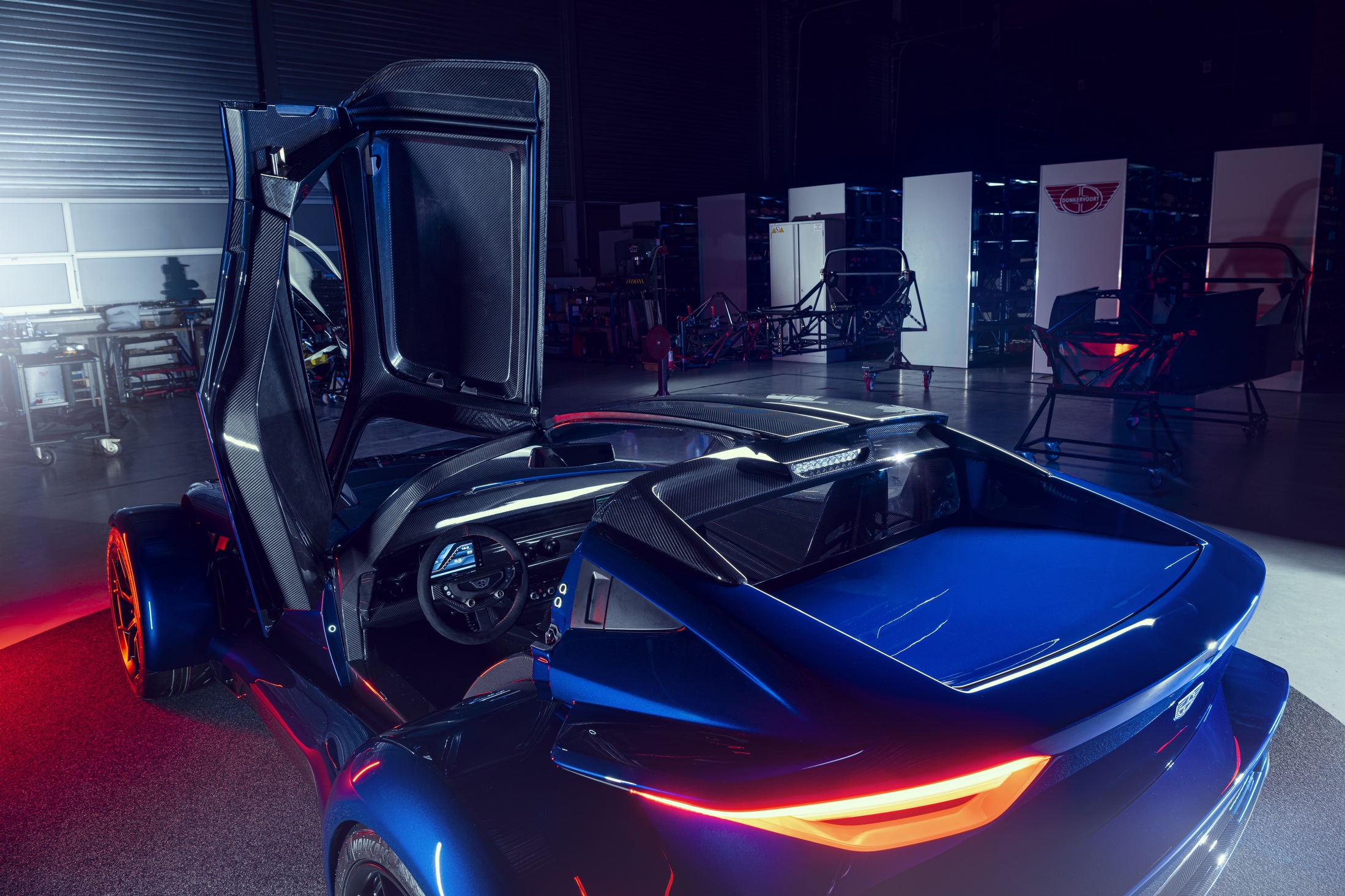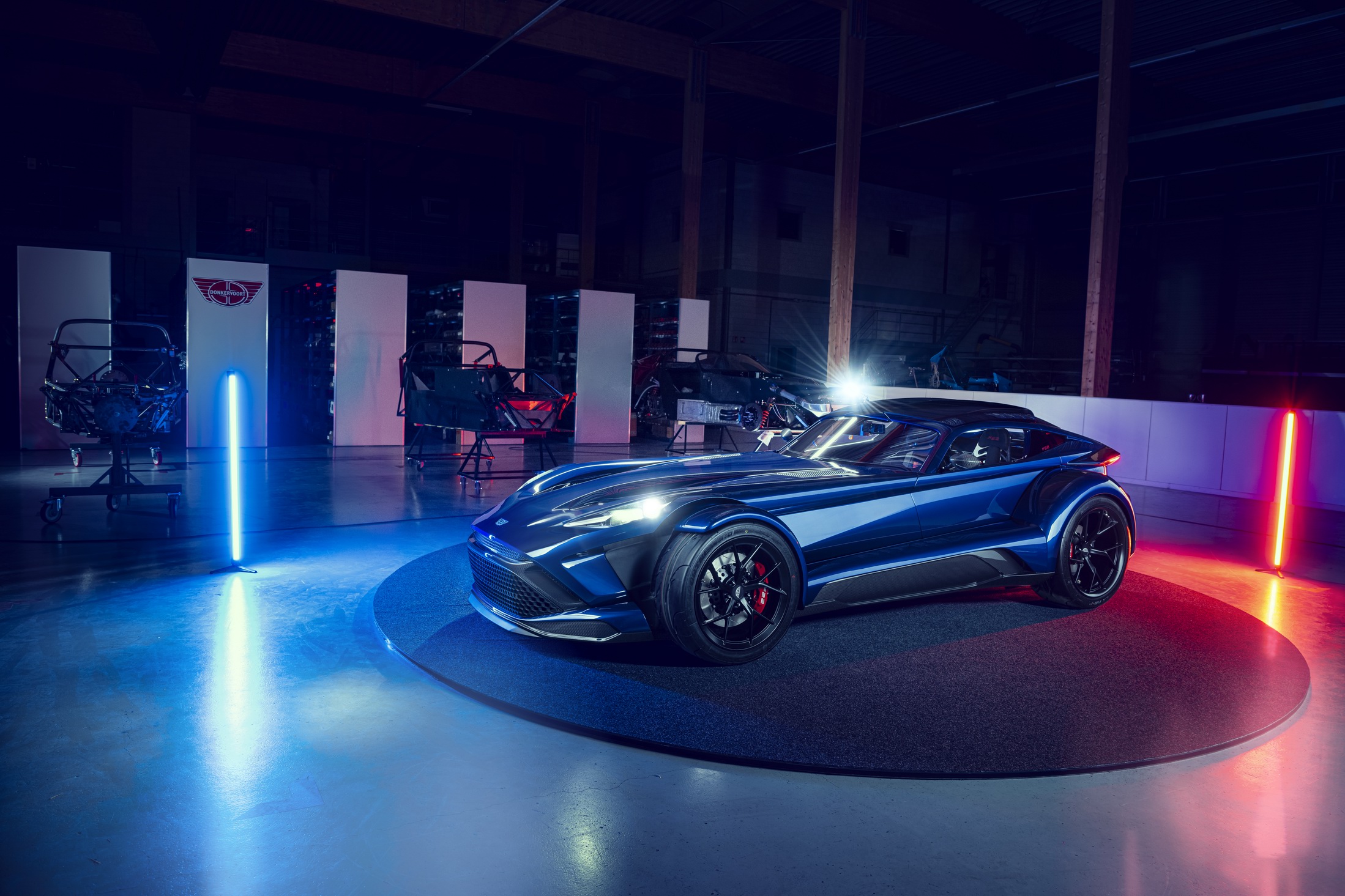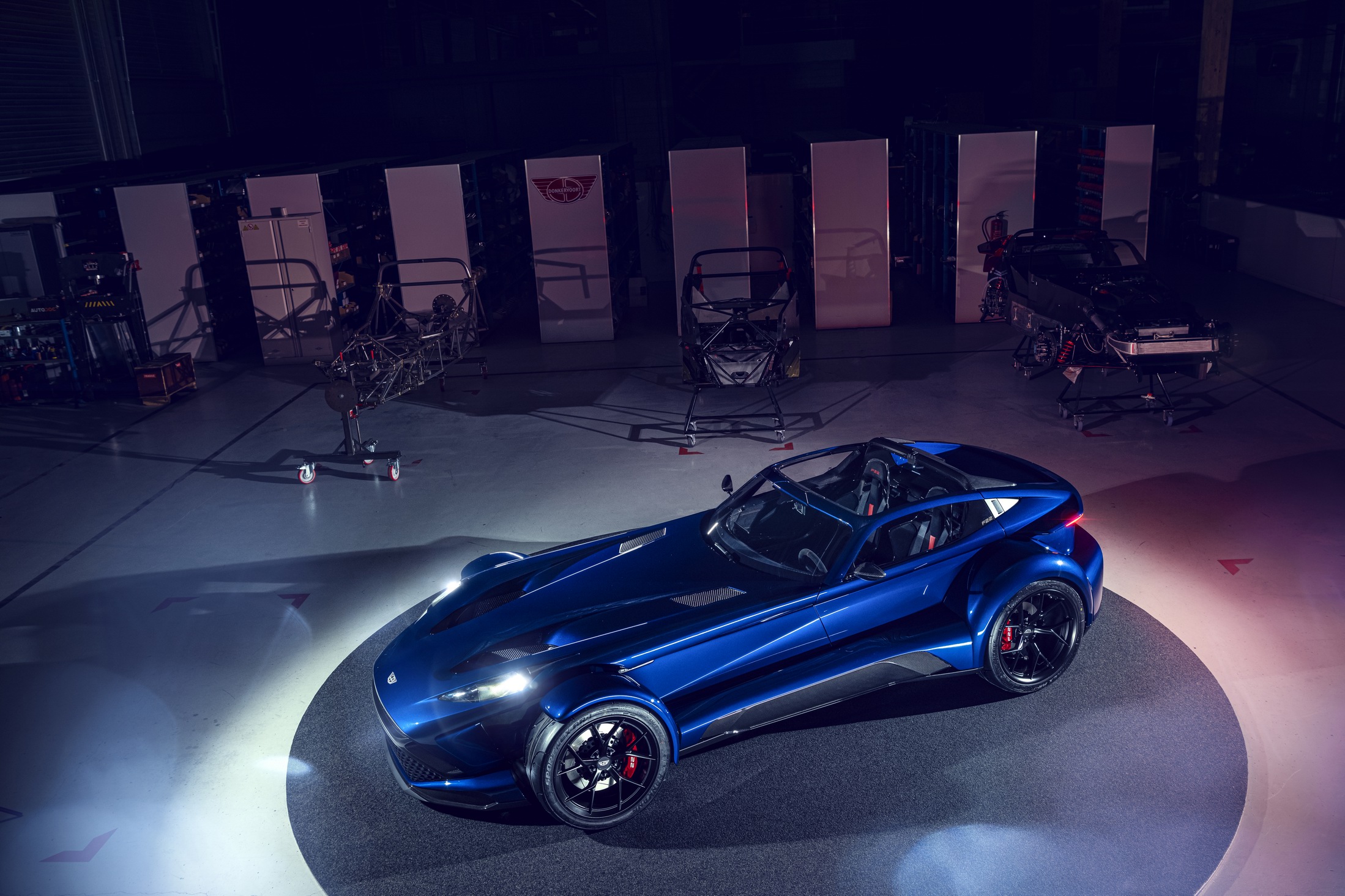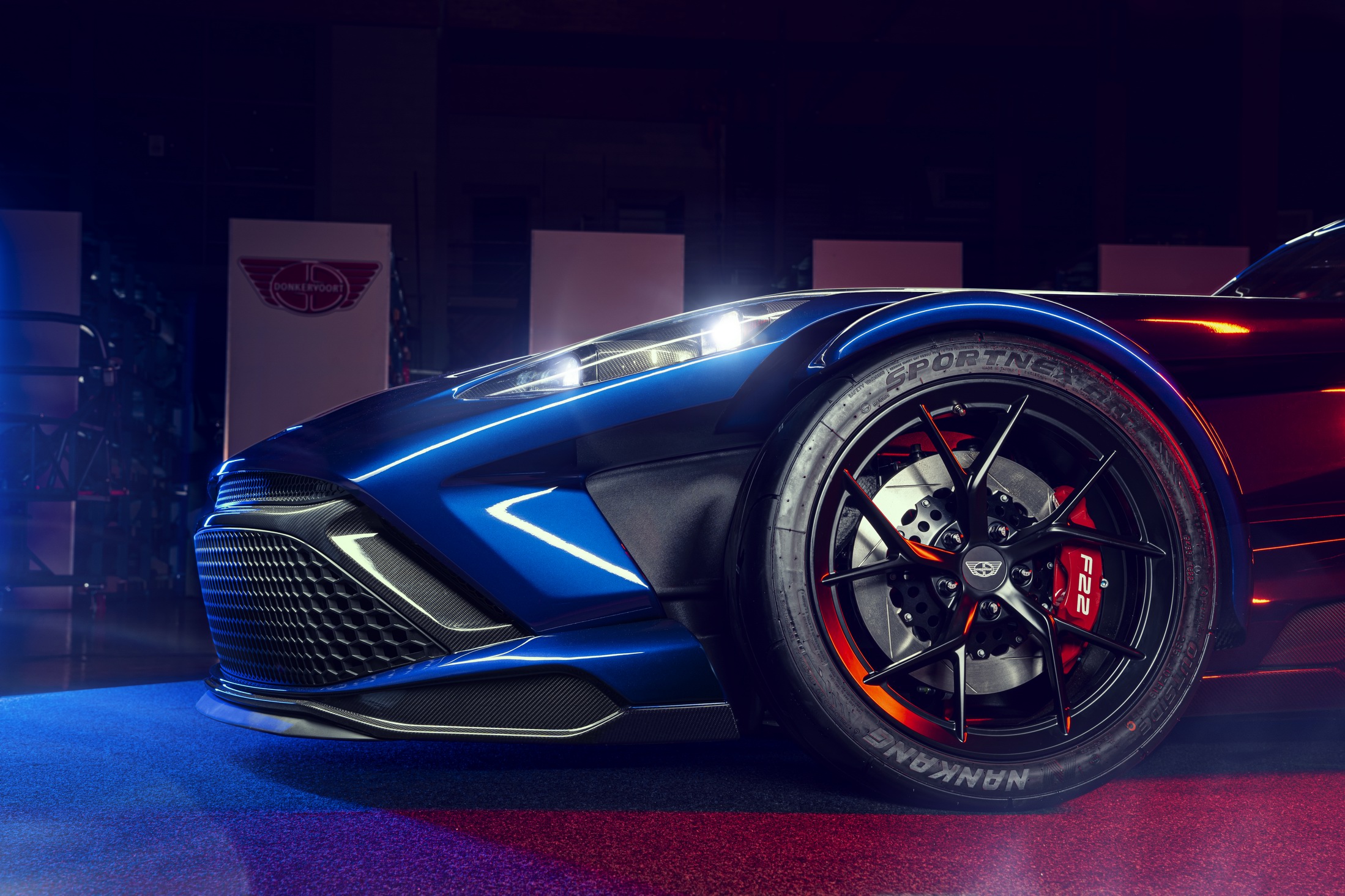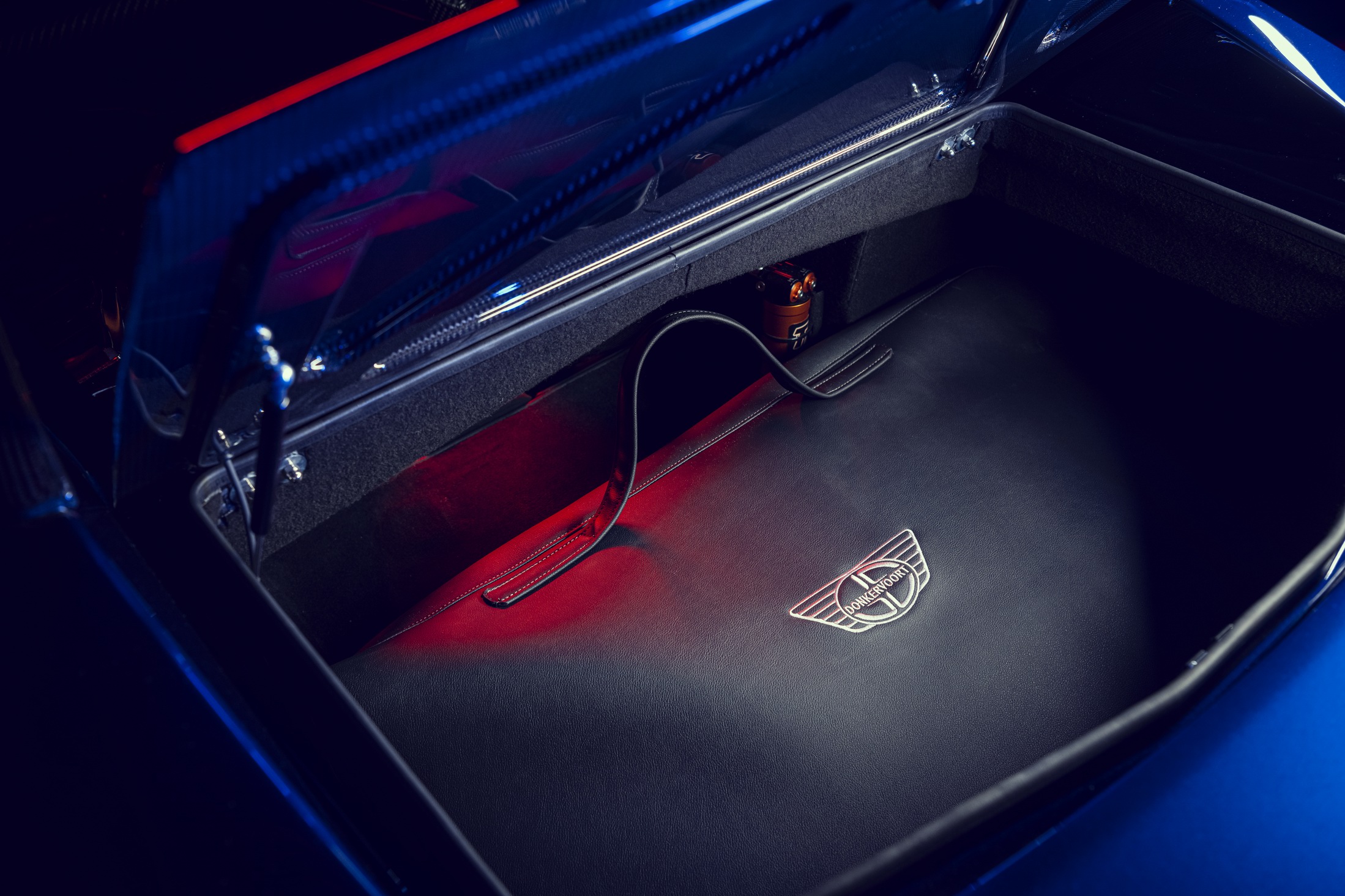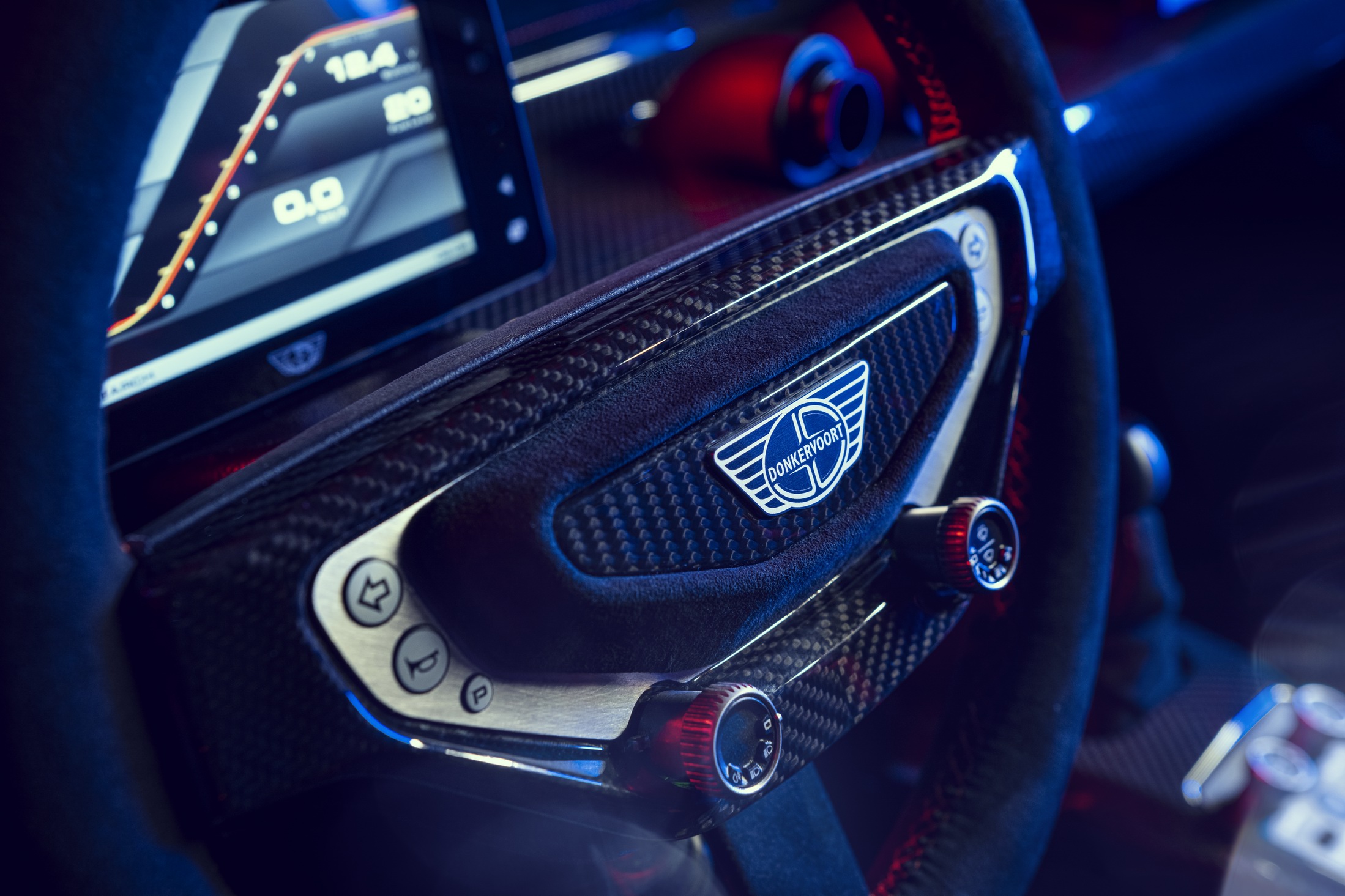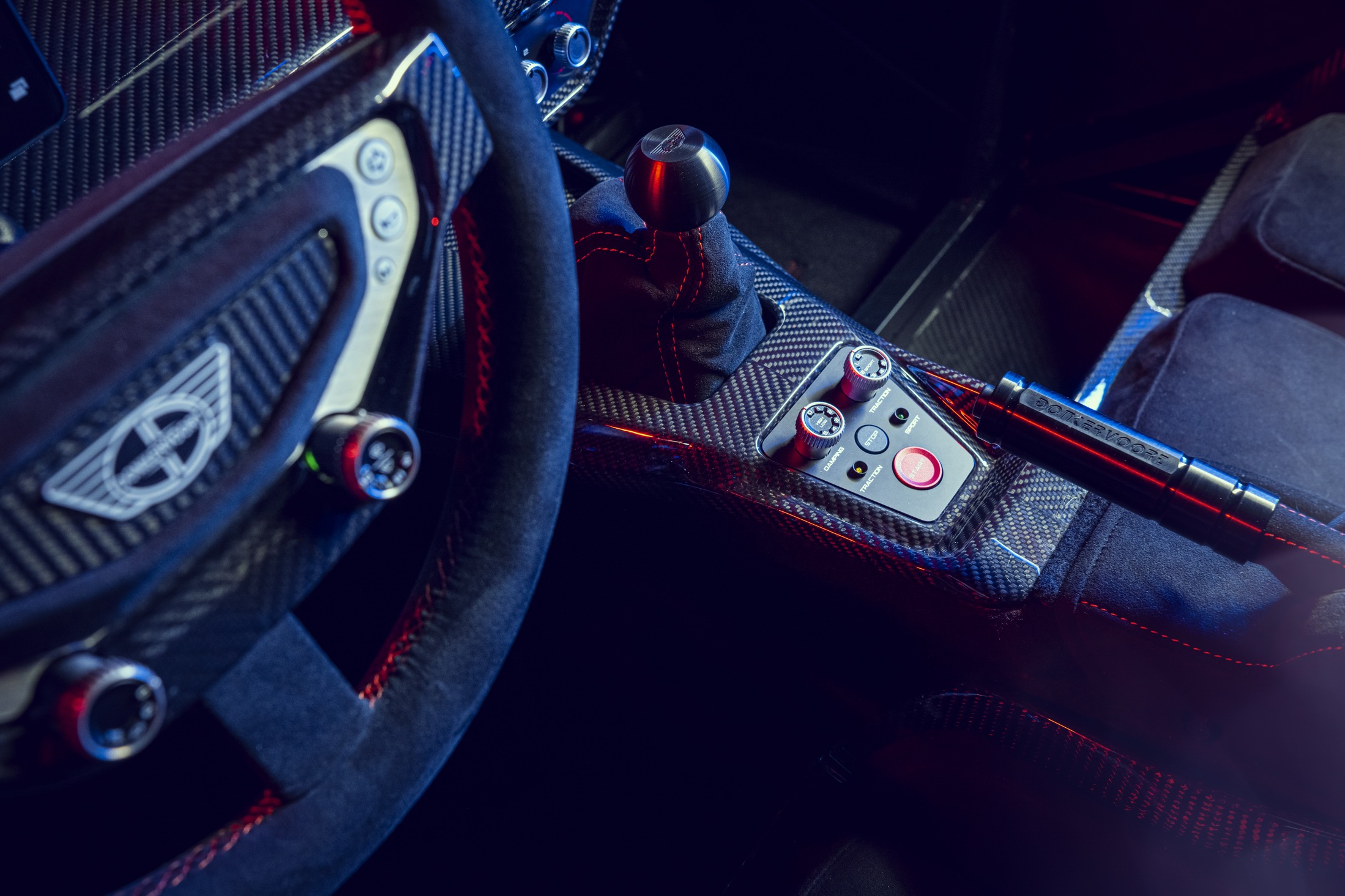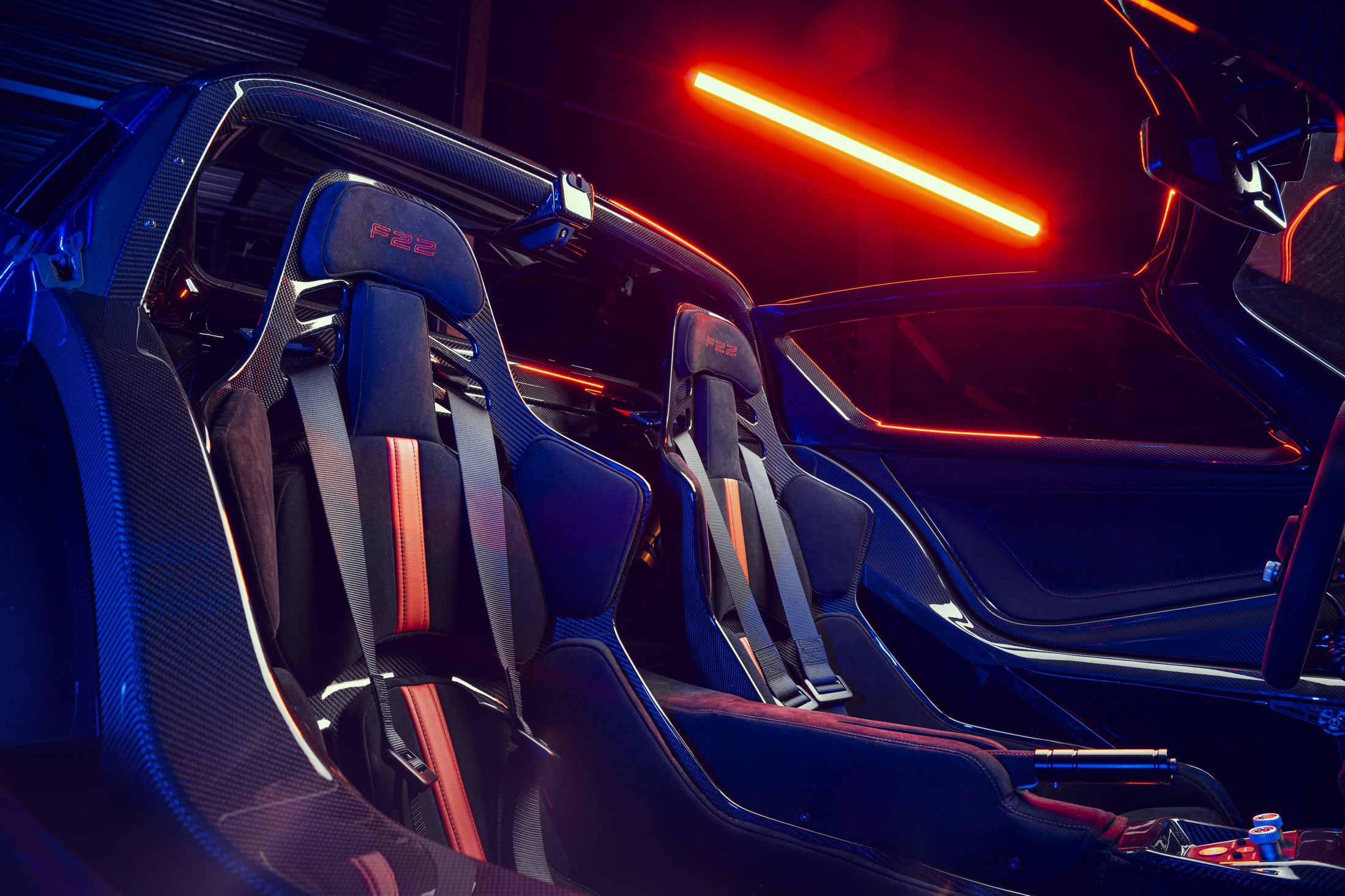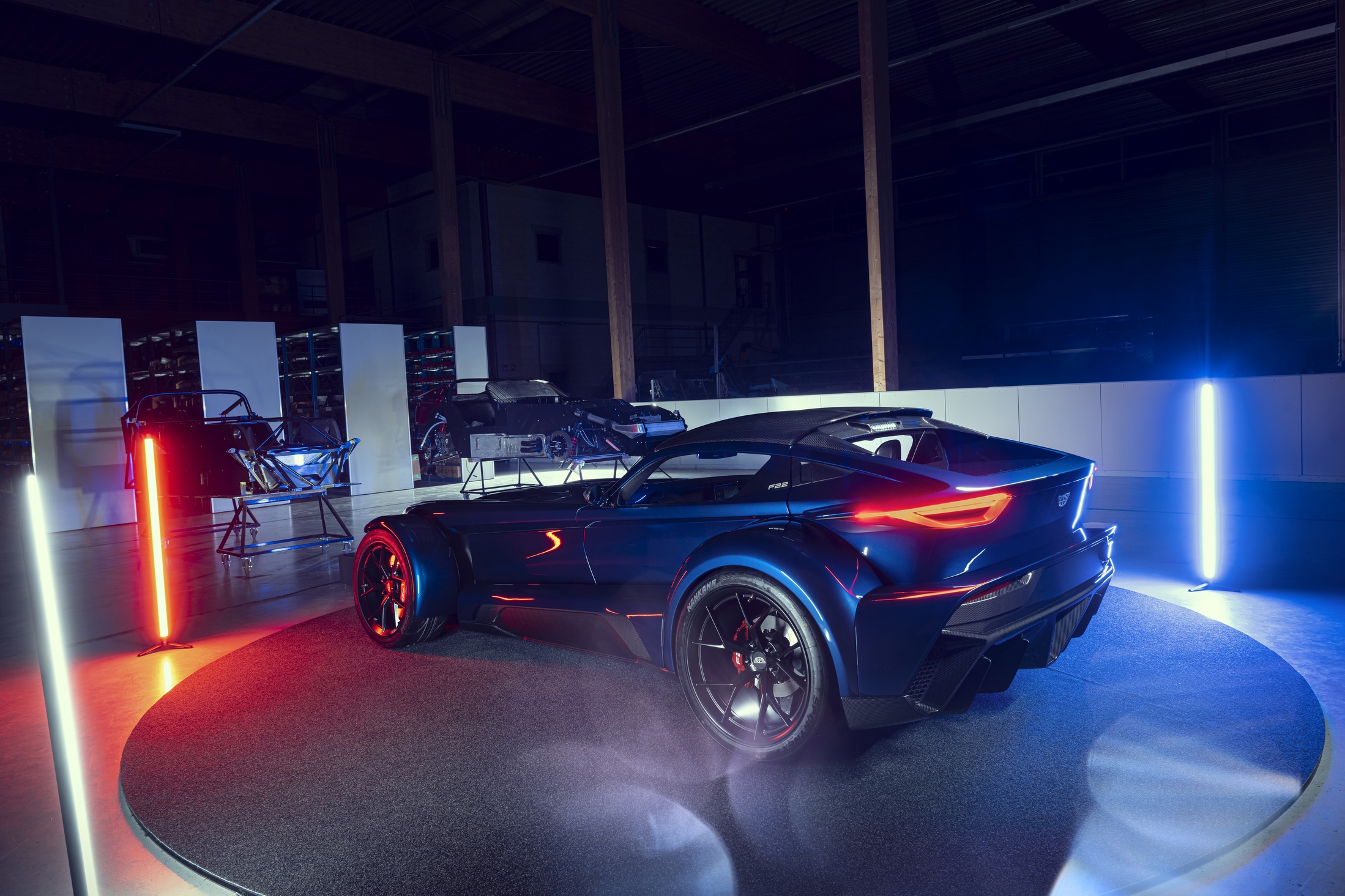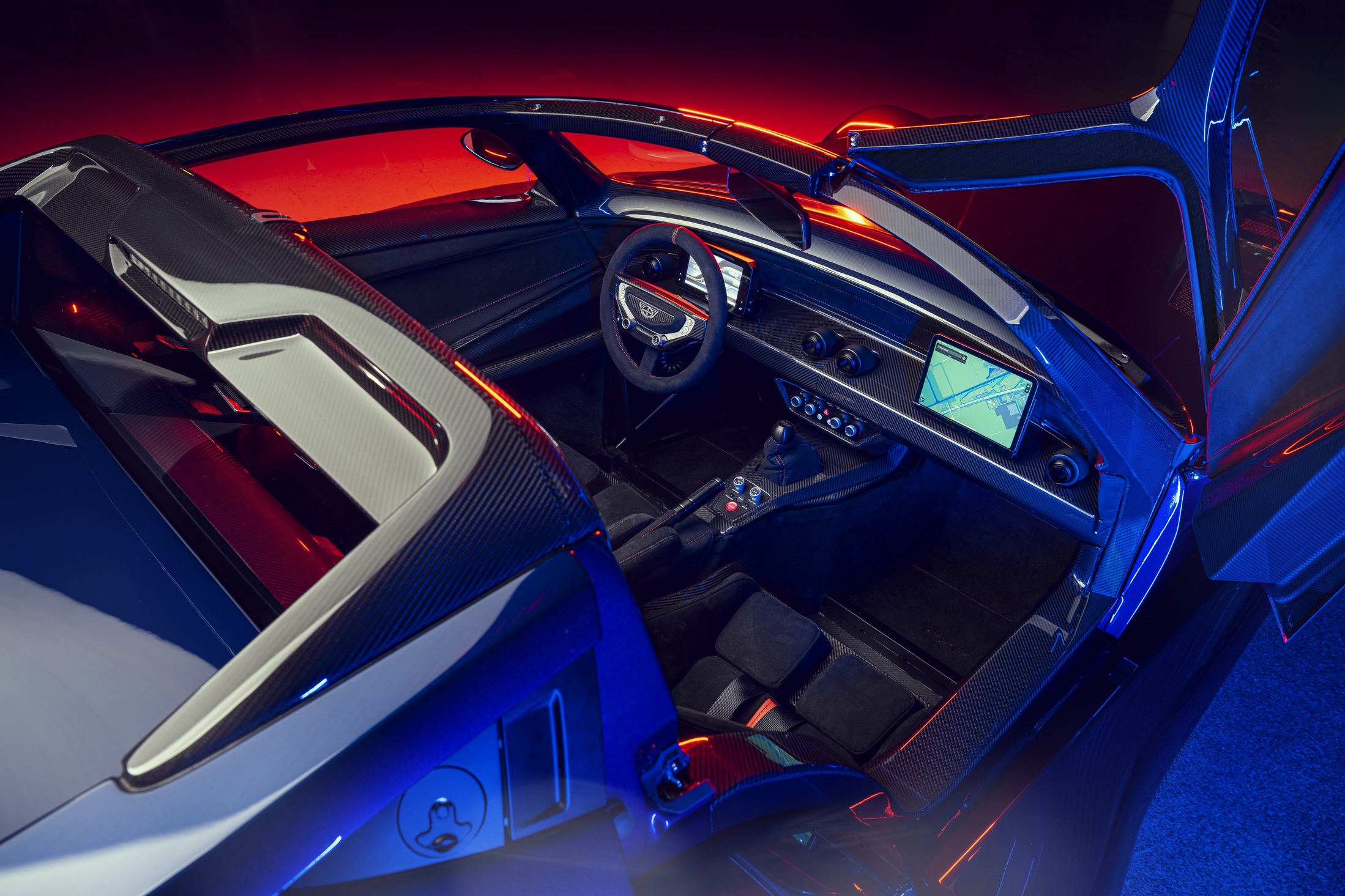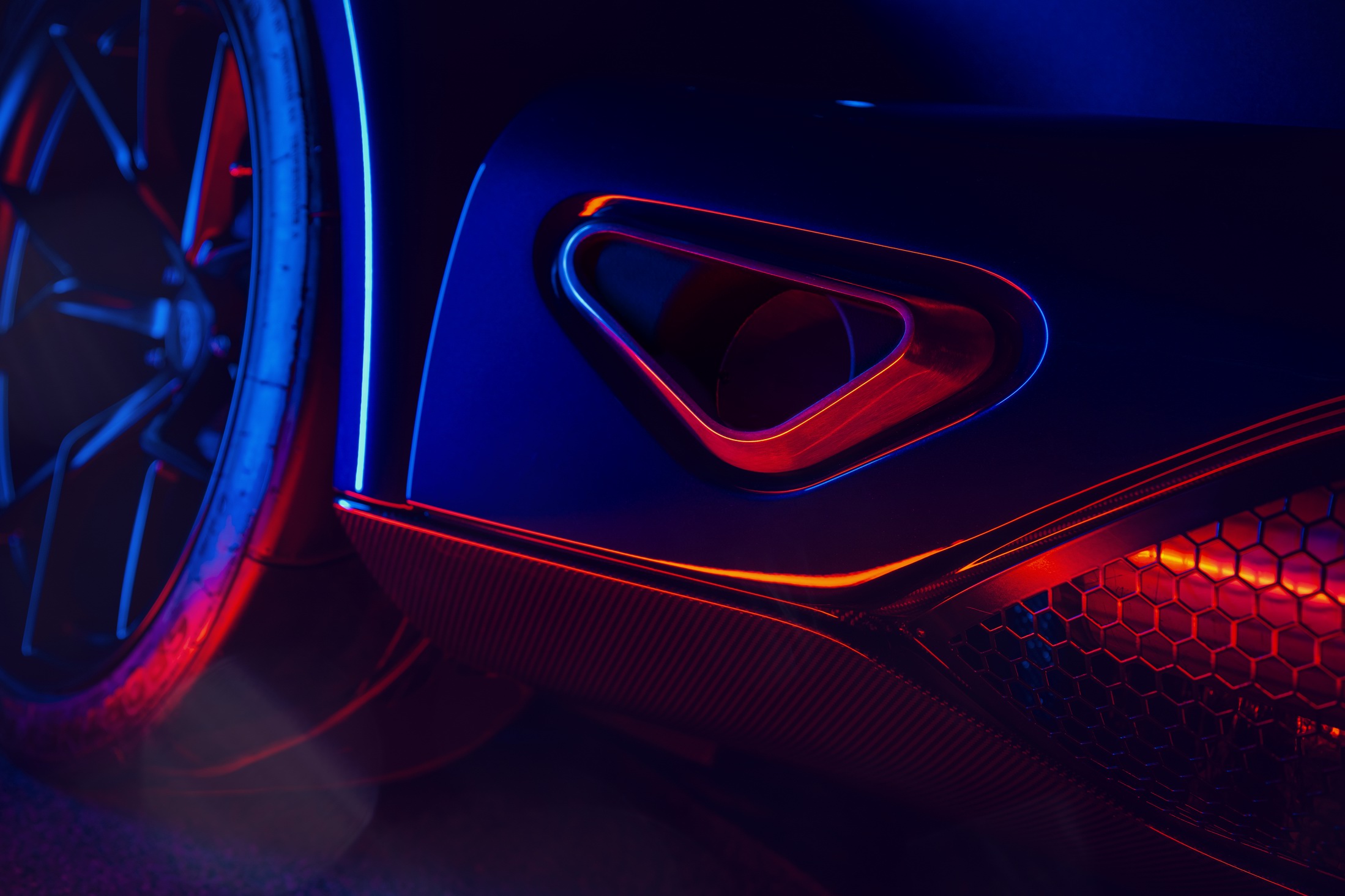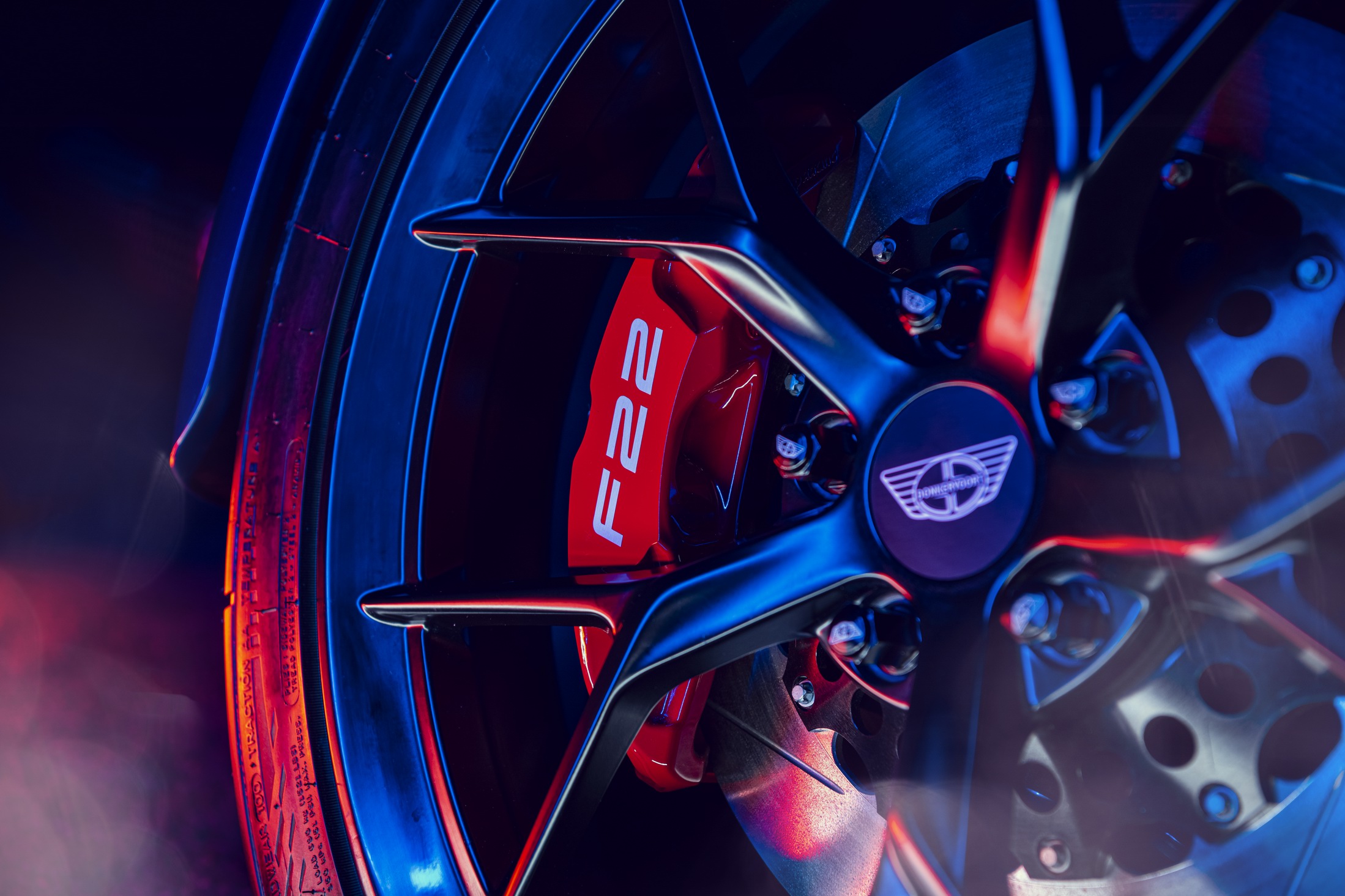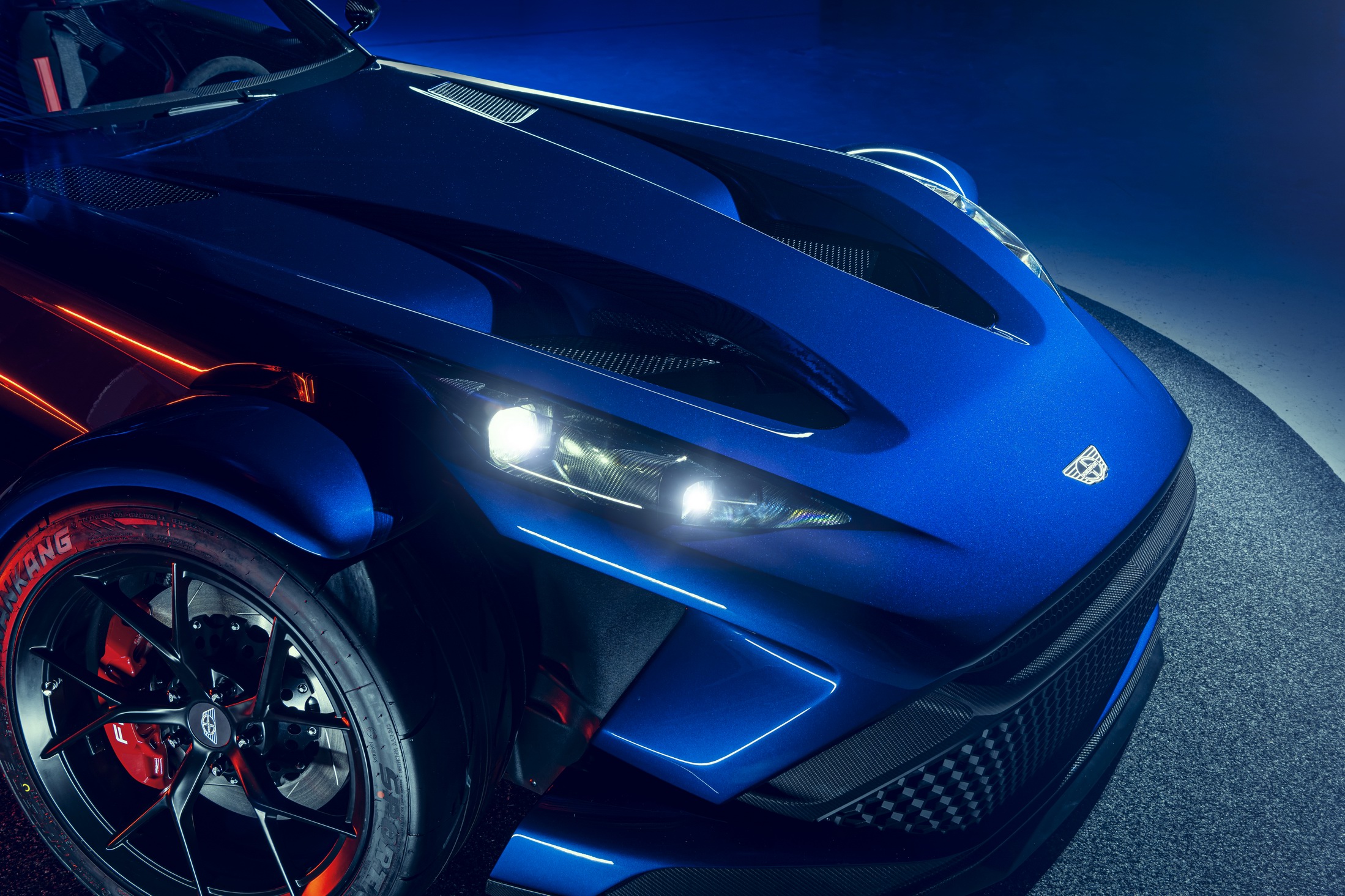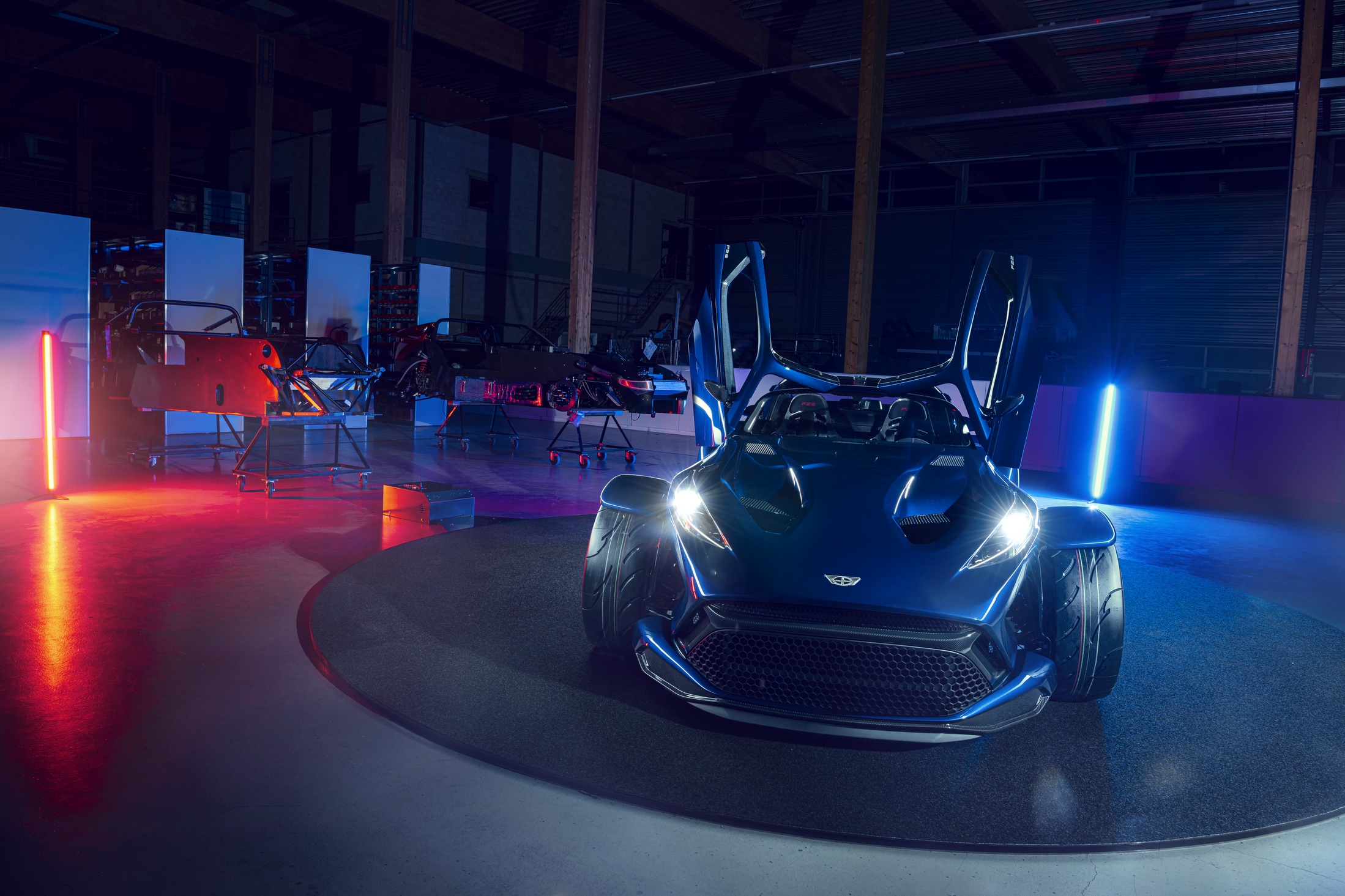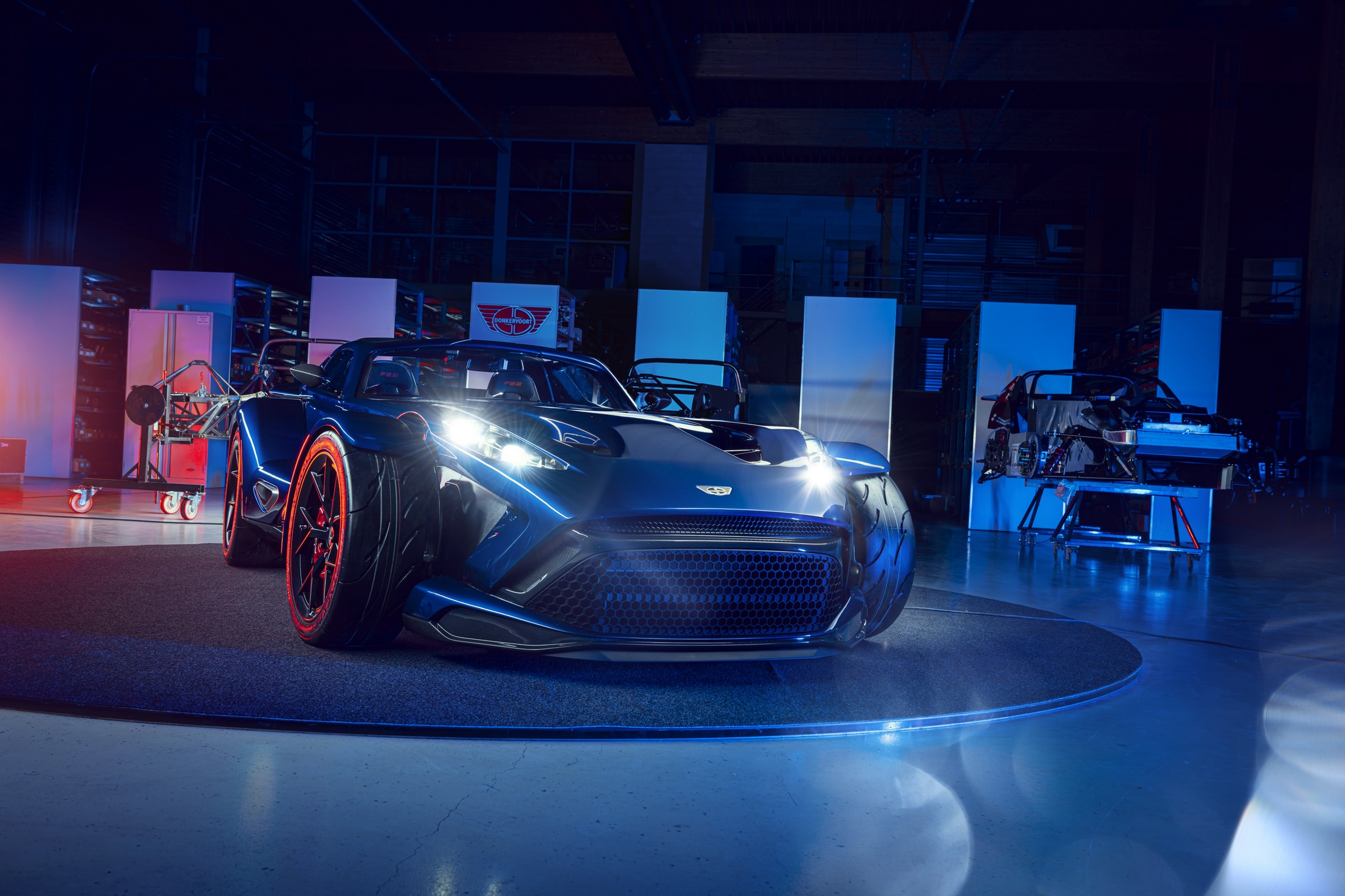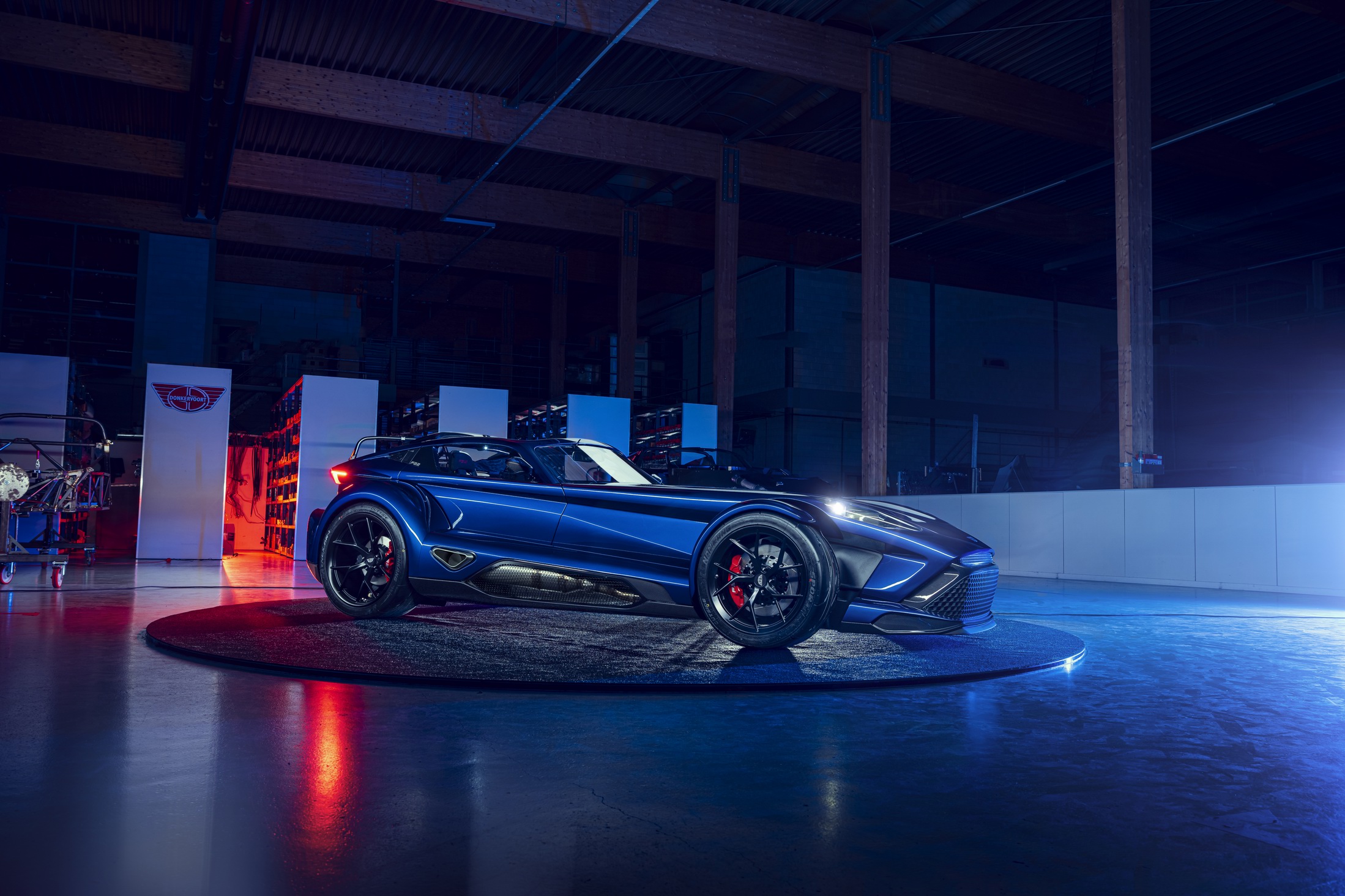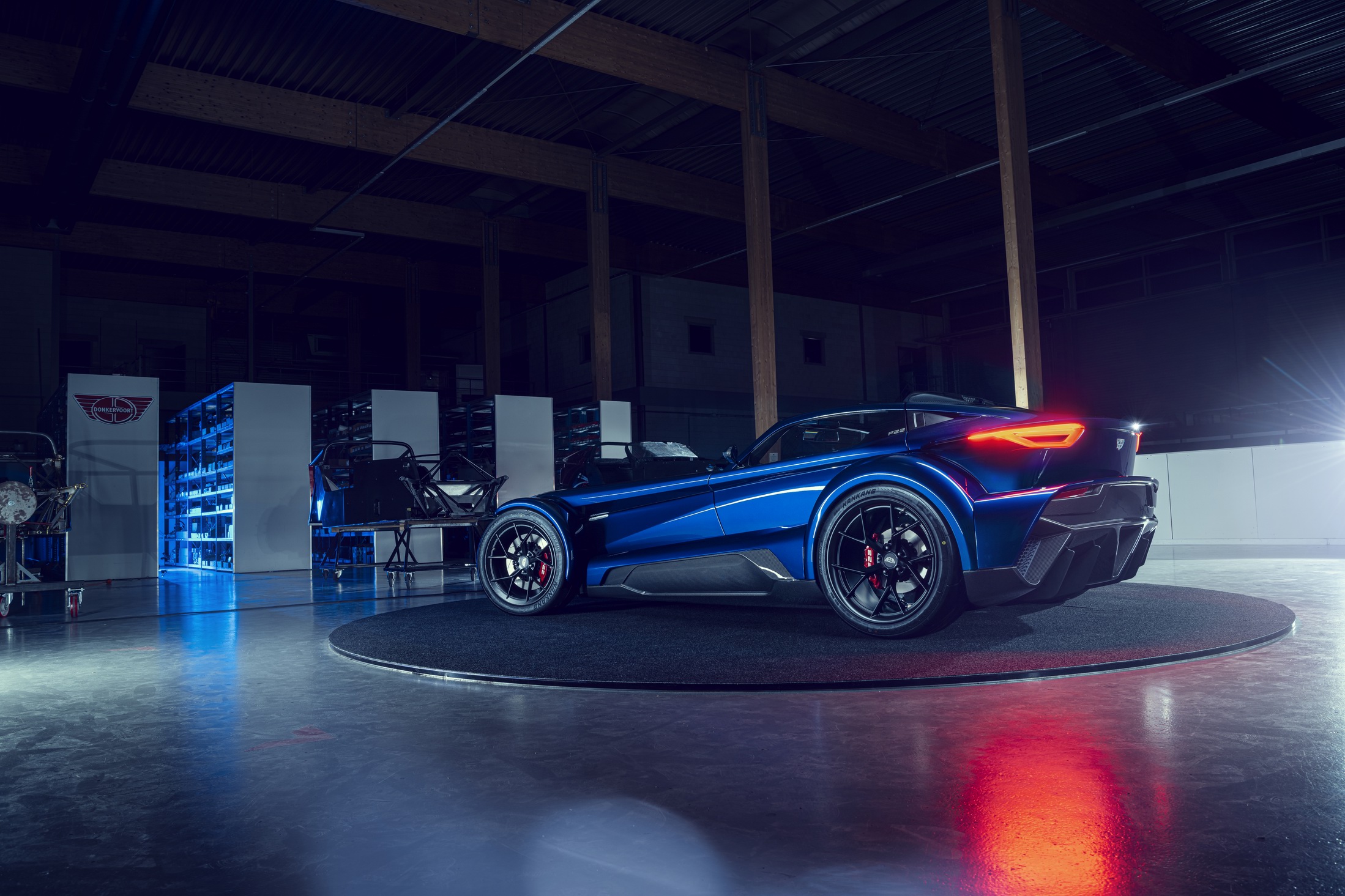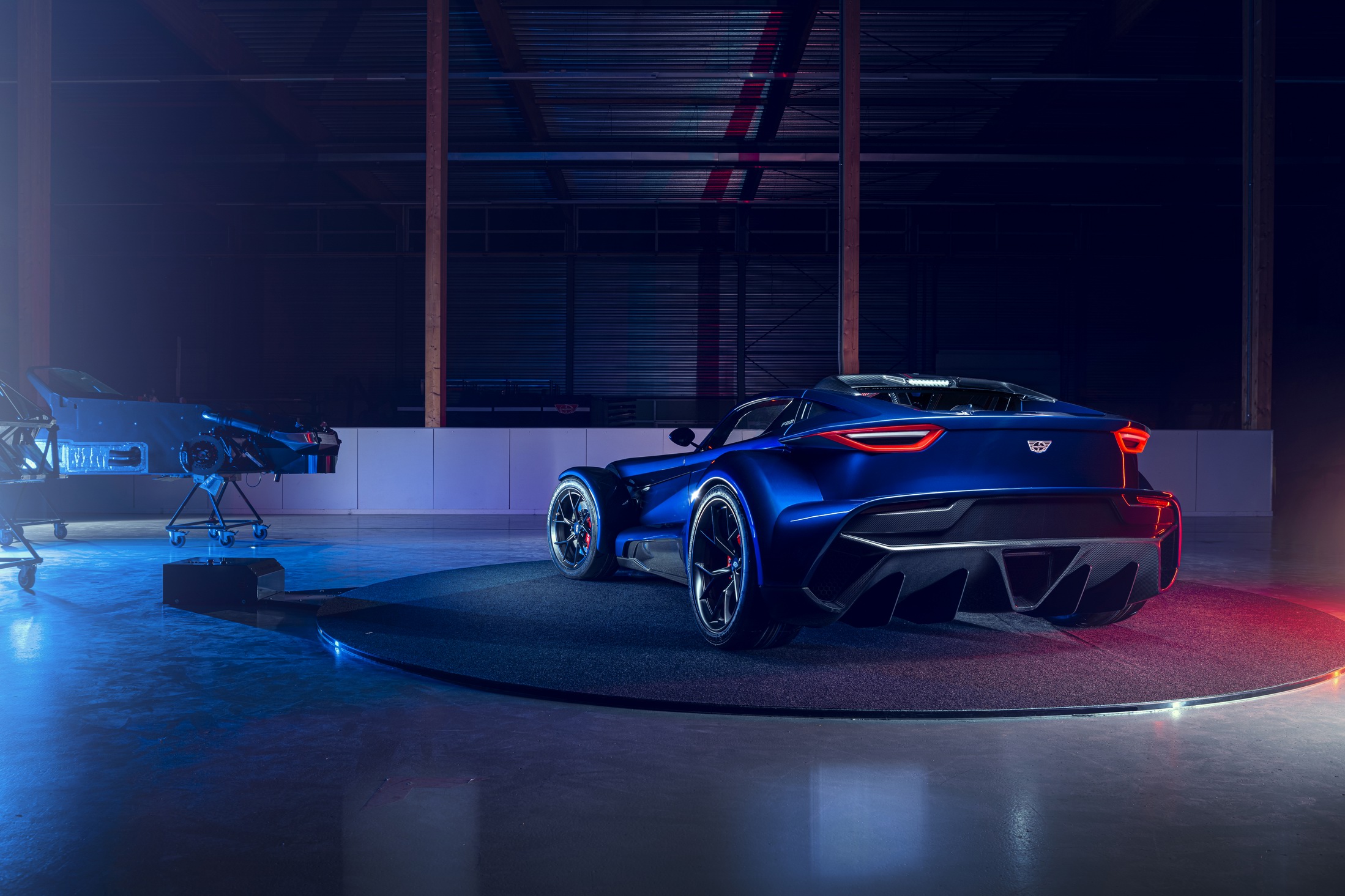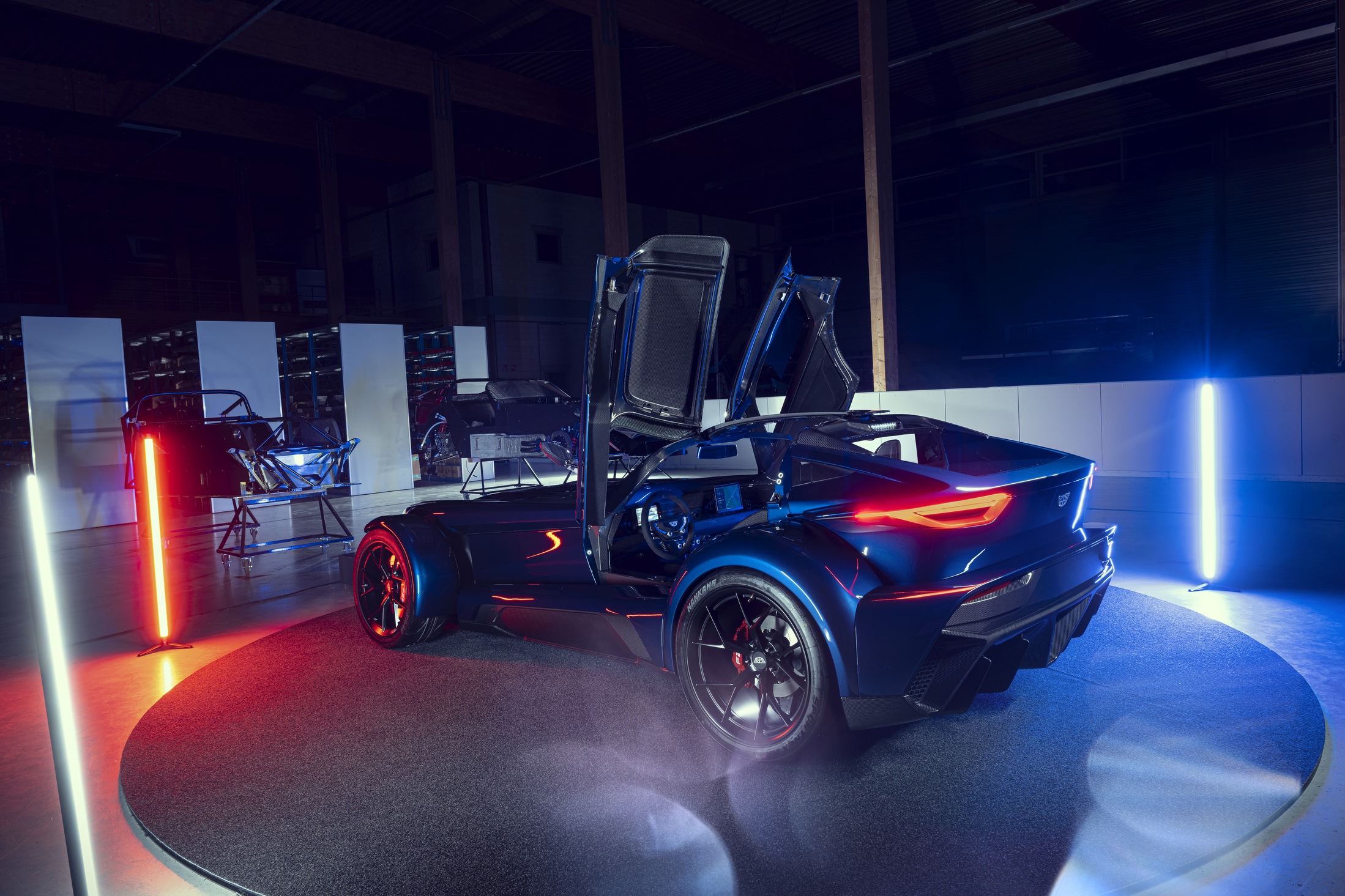Duch automaker Donkervoort has taken the wraps off the F22, its first all-new product in more than a decade that effectively replaces the D8 GTO. The supercar is a clean-sheet design with a new chassis, open-wheel styling, an Audi-sourced engine producing 492 hp, and a weight of just 750 kg (1,653 pounds).
The F22 was named after the daughter of Managing Director Denis Donkervoort (Filippa) born earlier this year. Despite being a new design, it is instantly recognizable as a Donkervoort product thanks to the exposed wheels, the long bonnet, the side-mounted exhaust pipes, and the aggressive styling cues. The rear wheels are better integrated into the body thanks to the wider fenders, improving stance and aerodynamics. The 4,039 mm (159 inches) long sports car also comes with butterfly doors, full-LED lighting, and a removable Twin Targa carbon-fiber roof converting it into a roadster.
Read: New KTM X-Bow GT-XR Is Your Latest Street Legal Track Toy
The Dutch automaker suggests that the F22 brings improvements in “practicality, comfort, and ease of use” compared to its predecessor, albeit without losing its supercar focus. Thanks to the larger footprint the two-seater cabin is more spacious than before, featuring custom Recar seats with optional six-point harnesses approved for racing and road use. The dashboard is quite minimal with a digital instrument cluster, an optional iPad mini serving as an infotainment touchscreen, an optional air conditioning system, and most controls integrated into the steering wheel. The boot has a capacity of 298 lt (10.5 cubic feet).
More Power And A New Hybrid Chassis
Donkervoort continues the tradition by using an Audi-sourced turbocharged 2.5-liter five-cylinder engine producing 492 hp (367 kW / 500 PS) and 640 Nm (472 lb-ft) of torque. This represents an increase of 57 hp (42 kW / 58 PS) and 70 Nm (52 lb-ft) compared to the outgoing Donkervoort D8 GTO Individual Series. At the same time, the mill is cleaner, reducing CO2 emissions to 163 g/km (-28 g/km).
Power is transmitted to the rear axle through a lightweight short-throw five-speed manual gearbox featuring Bosch rev-matching technology, with the help of a Torsen limited-slip differential. Electronics are limited to a multi-step traction control system and an optional race-grade Bosch ABS.
According to the maker, it can accelerate from 0-100 km/h (0-62 mph) in 2.5 seconds, and from 0-200 km/h (0-124 mph) in 7.5 seconds before reaching a top speed of 290 km/h (180 mph). More importantly though, Donkervoort claims that the F22 delivers up to 2.15g of lateral acceleration, showing its handling-focused nature.
The all-new hybrid chassis is made of tubular steel and ex-core carbon fiber (carbon sandwich system), doubling the torsional and bending rigidity compared to its predecessor, while improving safety. The F22 tips the scales at 750 kg (1,653 pounds), which makes it 70 kg (153 pounds) heavier than the model it replaces. Still, the increased power output gives it an impressive power-to-weight ratio of 666 PS per tonne.
The suspension – double wishbones front and rear – comprises TracTive adaptive shock absorbers and an adjustable hydraulic system raising or lowering the car by up to 35 mm (1.4 inches). Braking is taken care of steel discs measuring 330 mm (13 inches) at the front, and 279 mm (11 inches) at the back, with four-piston calipers by AP Racing. Steering can have servo assistance or power assistance according to the preferences of the owner.
Only 75 Will Be Made, 50 Are Already Spoken For
Production of the Donkervoort F22 will be limited to 75 units, with 50 of them already sold out. The company is accepting orders for the remaining units and the next supercar which will be presumably based on the F22. Pricing starts from €245,000 ($258,266) excluding taxes for European markets, while it will also be available in North America and in the Middle East. Deliveries are scheduled to start in January 2023. Rivals include the KTM X-Bow GT-XR and the BAC Mono, as well as similar proposals from Caterham, and Radical.




